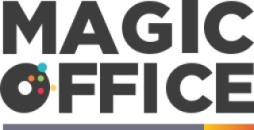
Understanding Forecasting Methodologies
Exploring Key Forecasting Methodologies
Forecasting remains a cornerstone in the realm of project management. It provides project managers crucial insights for effective resource allocation, cost analysis, and timely execution of projects. Understanding the variety of methodologies used in forecasting is vital to harnessing its full potential. Forecasting methodologies often rely on historical data and analytics models to predict future outcomes. Techniques such as time series analysis, including moving average and exponential smoothing, offer accurate projections based on past patterns. These methods help project managers anticipate potential roadblocks and adjust their strategies accordingly. Among the diverse set of forecasting techniques, predictive analytics stands as a powerful tool. It combines real-time data with historical trends, offering a robust framework for decision-making that is both data-driven and intuitive. Predictive analytics can significantly enhance project success by enabling managers to forecast project timelines, resources, and costs more precisely. Another approach is resource forecasting, crucial for optimal resource allocation within a project. This technique assists managers in predicting resource needs ahead of time, thus avoiding the over or underutilization of resources. By forecasting resources effectively, companies can ensure that projects progress smoothly without unnecessary delays or cost overruns. The evolution of project forecasting methodologies continues to be influenced by advancements in technology and data analytics. As models become more intricate, project managers must stay abreast of these changes to maintain competitive advantage. With the right forecasting models in place, projects can achieve greater efficiency and success. For those interested in a deeper understanding of how forecasting can be intricately linked with legal considerations in the corporate world, especially within Indian companies, further insights can be garnered by exploring the nuances of nonsolicitation and noncompete clauses. This aspect plays a role in shaping the landscape of forecasting and resource management in projects.The Role of Cultural Nuances in Forecasting
{"Embracing Cultural Dimensions in Forecasting
Understanding cultural dynamics is essential in crafting effective forecasting strategies for project management. The Indian business environment, rich in diversity, impacts how companies approach forecasting and resource allocation. Recognizing these nuances can not only steer projects towards success but also optimize the use of forecasting techniques.
Culture often infuses both flexibility and rigidity in resource management and can dictate the ways managers utilize forecasting. For instance, in some projects, hierarchical decision-making is prevalent, which can influence the time it takes for forecasts to be reviewed and approved. Understanding and adapting to these hierarchical frameworks while making your prediction models can lead to more effective project management.
Moreover, data analysis and forecasting rely heavily on communication and collaboration among teams. Cultural tendencies towards group cohesion and consensus can either facilitate or impede the adoption of forecasting tools designed for real-time data analytics and predictive analytics. Hence, fostering an environment where teams are encouraged to voice insights derived from historical data and time series analysis can further enhance the accuracy of forecasts.
From a practical perspective, addressing cultural factors also involves determining which forecasting models resonate best with both local and project team dynamics. For example, in some cases, the implementation of exponential smoothing or moving average models might suit better due to their simplicity and ease of understanding, aligning well with collective team decision-making processes.
Managers must be well-versed in these cultural considerations, intertwining them with project forecasting methodologies to ensure resources are allocated efficiently. For more insights on project management challenges within Indian companies, including how cultural contexts shape forecasting practices, delve into this informative piece on exploring effective project management in Indian manufacturing here.
Embracing cultural realities not only enhances the efficiency of project forecasts but also aligns them more closely with the strategic aims of Indian companies.
Challenges in Implementing Forecasting in Indian Companies
Overcoming Barriers in Implementing Forecasting
In the realm of project management within Indian companies, applying forecasting techniques often encounters several challenges. These obstacles can affect the accurate deployment of methodologies and can influence project success. A couple of prominent hurdles faced by project managers and organizations include data availability, cultural influences, and resource allocation. Firstly, accurate forecasting relies heavily on comprehensive historical data and analysis. However, many firms struggle with data management systems that are either outdated or not integrated with advanced analytics capabilities. This gap results in unreliable datasets which, in turn, compromise the reliability of forecasts. For effective project forecasting, adopting predictive analytics and real-time data analytics is crucial. Furthermore, the lack of skilled resource forecasting is another significant roadblock. Proper resource allocation is imperative to execute precise forecasts. Companies often face a shortage of personnel experienced in the latest forecasting models like moving averages or exponential smoothing. Therefore, continual training and investment in analytics skill sets are essential to enhancing project forecasting accuracy. Additionally, the dynamic cultural nuances prevalent in Indian corporate environments add another layer of complexity. The influence of hierarchical decision-making processes can sometimes delay the adoption of modern forecasting techniques. Cultural shifts within organizations toward a more results-based approach can be supported by evidence, such as enhancing office efficiency with a comprehensive visitor log template. While these challenges pose significant hurdles, addressing them with a structured approach to upgrading technology infrastructure and investing in personnel training will undoubtedly strengthen the forecasting methodologies employed. Such improvements will ultimately lead to better resource allocation, cutting costs, and enhancing the overall success and management of projects.Case Studies: Success Stories from Indian Companies
Successful Applications of Forecasting Techniques in Indian Companies
In recent years, numerous Indian companies have successfully leveraged forecasting techniques to enhance project management efficiency. Examining these success stories provides valuable insights into the applicability and effectiveness of various methodologies in real-world scenarios. One notable example is a technology firm that adopted time series analysis for project forecasting. By analyzing historical data and employing models such as the moving average and exponential smoothing, project managers were able to improve the accuracy of future forecasts significantly. This approach facilitated more precise resource allocation and time management, ultimately contributing to project success. Another case involved a manufacturing company that integrated predictive analytics into its project management framework. Relying on data-driven insights allowed the company to optimize their resource forecasting processes. Through the use of sophisticated analytics tools, project managers could align their strategies with dynamic market trends, resulting in considerable cost savings and enhanced project outcomes. These cases demonstrate the transformative impact of using forecasting models tailored to specific organizational needs. By employing a combination of methodology project approaches, such as real-time data analytics and resource forecasting, companies can achieve more accurate and timely project management solutions. As more Indian companies embrace these techniques, the prospects for greater efficiency and success in future projects become increasingly promising.Tools and Technologies for Effective Forecasting
Technological Advances for Robust Forecasting
In the realm of project management, the use of various tools and technologies has revolutionized the potential of forecasting. The role of technology is indisputable when it comes to enhancing the accuracy and efficiency of forecasts. From time series analysis to moving average methods, leveraging the correct tools can significantly elevate a company's project success rate.
Data analytics plays a pivotal part. With real-time data and historical data analysis, project managers can employ predictive analytics to foresee changes and make informed decisions, enhancing the precision of their resource allocation. For instance, using exponential smoothing can help smooth out fluctuations in the data, providing a more accurate forecast.
The models project managers select can make or break the forecasting process. Choosing appropriate forecasting techniques is crucial. Whether utilizing a simple moving average model or a more complex methodology project, the aim is always to improve forecast accuracy and reliability.
It's important to note that no tool can work in isolation. Integrating analytics-based models with a comprehensive understanding of project dynamics and costs ensures that forecasts don't just remain numbers, but actionable insights. Managers should aim to harness technology effectively to augment the forecasting methodology they choose to employ.












